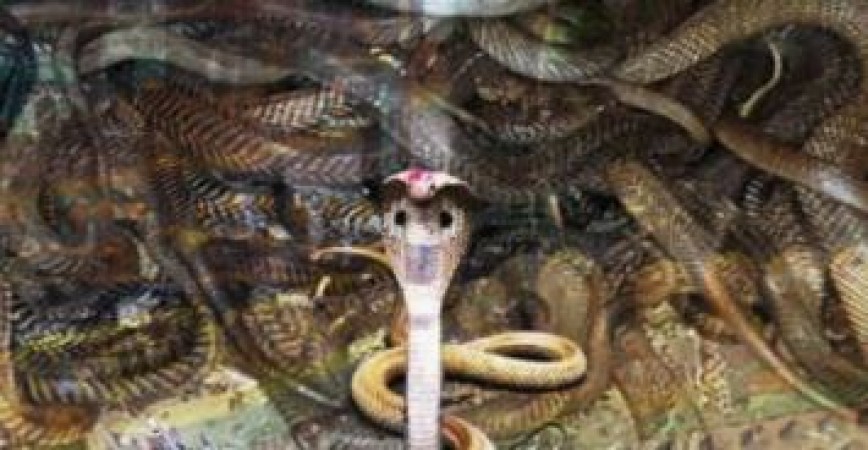
Nag Panchami is one of the popular festivals according to Indian Believes. Nag Panchami is a traditional Hindu festival, which is symbolic of snake worship. The festival derives its name from the combination of two words - nag, which means cobra/serpent, and Panchami, which is the fifth out of the fifteen days of the moon’s waxing or waning.
Nag Panchami is celebrated on the fifth day in the month of Shravan (July/August), according to the Hindu calendar. On this day, women worship Nag Devta and offer milk to snakes. Women also pray for the wellness of their brothers and family.
Story of Naag Pachami
There are various stories as the place the story behind the celebration of Naag Panchami changes. One of the most famous stories is about a farmer’s daughter.
One day while ploughing the field, three children of snakes came under it and died. After the death of Naag(male snake), at first, Naagin(female snake) expressed sorrow by mourning, then, planned to take revenge on the murderer of its sons.
In the darkness of night, Naagin, killed the farmer, his wife, and his two sons by biting them. The next day morning, Naagin(she-serpent) came to bite the farmer's daughter. The girl kept a bowl full of milk and joined hands for forgiveness,in front of Naagin. By this gesture of the girl, Naagin got happy and gave back the lives of a farmer, his wife, and two sons. That day it was Panchami Tithi of Shukla Paksha in Shravan Maas. From that day, to be safe of Serpent’s anger, they are worshiped this day and Naag Panchami is celebrated.
While there is also one other popular Naag Panchami story of King Janmejay, King Janmejay ascended to the throne of Hastinapura upon the death of his father Parikshit. Parikshit, the lone descendant of the House of Pandu, had died of snakebite. He had been cursed by a sage to die so, the curse having been consummated by the serpent-chieftain Takshak. King Janmejay bore a deep grudge against the serpents for this act, and thus decided to wipe them out altogether. He attempted this by performing a great sarpyadnya (the sacrificial fire of snakes). At that time, a Sage Astik, came and interfered. King Janmejay had to listen to the words of the Sage Astik and stopped the sarpyadnya. The day on which King Janmejay stopped sarpyadnya was Shravan Shukla Panchami.
Nag Panchami Pooja
On both the sides of door, the serpent is worshiped with milk, grass, Kusha, sandalwood,Akshat(rice used in worshiping), flowers, etc. After this, an item made of Ladu(sweet) and Malpua is offered to God Snake. It is believed, if you make the snake bath with milk on this day, the free from snake vanishes. It is celebrated in different styles all over India. No fried or salty food is prepared on this auspicious day.
On this day, people go to temples to worship snake deities, and in some cases to snake pits to worship real snakes, where they make offerings like milk, sweets, and flowers to the snakes. During the festival, women observe a fast or vrat, where they abstain from food, signifying devotion and discipline. It lasts from sunrise till sunset.
Will Chickenpox Virus Trigger Alzheimer’s?
Scientists may have found a new way to treat Chronic Migraine